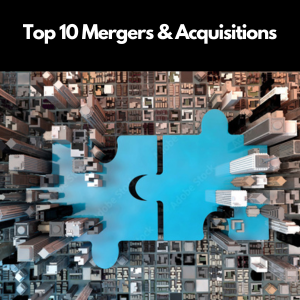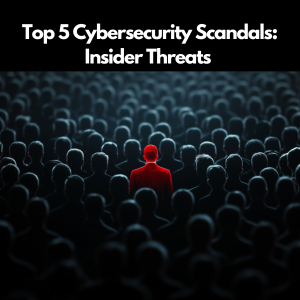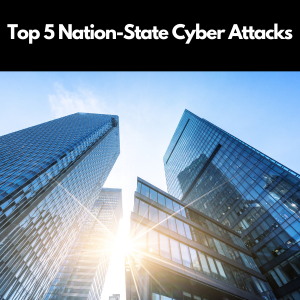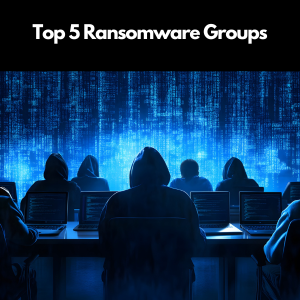What defines a truly transformational acquisition in the B2B SaaS space? The most impactful deals go beyond simple expansion; they reshape entire markets, dictate technological evolution, and push enterprises toward new business models. These acquisitions don’t just change ownership—they redefine how IT and cybersecurity professionals operate, forcing shifts in infrastructure, vendor relationships, and security strategies.
Over the past decade, an unprecedented wave of multi-billion-dollar acquisitions has reshaped the enterprise technology landscape—particularly in hybrid cloud, cybersecurity, AI, and enterprise automation. From Dell’s $67B EMC takeover, which cemented its dominance in storage and infrastructure, to IBM’s Red Hat acquisition, which propelled open-source cloud computing, these deals reveal a clear pattern: AI, cloud, and security remain the core battlegrounds of enterprise tech.
Why These Deals Matter to IT and Cyber Leaders
For B2B IT and security professionals, these acquisitions don’t just make headlines—they directly impact technology roadmaps, security postures, and procurement strategies. The consolidation of SaaS giants influences everything from licensing models and vendor lock-in risks to product innovation and long-term viability.
- Security leaders must assess whether new ownership strengthens or weakens a product’s security posture.
- CIOs and IT teams must adapt to changes in integration, interoperability, and long-term support.
- Business leaders must evaluate the risks and opportunities of vendor consolidation and shifting market power.
Beyond the initial announcement, the long-term effects of these acquisitions shape IT decision-making, pricing structures, and the very foundation of enterprise tech stacks.
Let’s break down the 10 biggest and most transformational M&A deals in B2B SaaS—why they happened, what they changed, and what they mean for the future of enterprise tech.
- Dell’s $67B EMC Takeover
Commonly referred to as the largest tech deal that was ever finalized, Dell’s $67 billion acquisition of EMC in 2016 truly redefined its role in enterprise IT, expanding data storage, cybersecurity, and cloud computing capabilities (Dell, 2016). Dell became a major leader in high-performance storage through a unique combination within its business ecosystem, integrating EMC’s technology into its infrastructure solutions. The acquisition also brought VMware under Dell’s control, strengthening its influence in virtualization and hybrid cloud environments.
The merger accelerated Dell’s shift toward hybrid cloud solutions, aligning with the growing demand for multi-cloud strategies among enterprises. EMC’s data protection and compliance expertise, including RSA Security and Data Domain backup solutions, became critical to Dell’s enterprise security offerings. The acquisition also transitioned toward subscription-based IT services as Dell expanded its as-a-service portfolio to compete with AWS and Azure.
- IBM’s $34B Red Hat Acquisition
Red Hat’s core technologies—Enterprise Linux (RHEL), OpenShift, and Ansible—became the foundation of IBM’s pivot toward open-source hybrid cloud solutions after a $34 billion in 2019. This move was centered on Red Hat’s flagship technologies, including Enterprise Linux (RHEL), Kubernetes-based OpenShift, and Ansible automation, all of which became critical components of IBM’s cloud strategy (Red Hat, 2019).
The acquisition allowed IBM to offer vendor-neutral cloud solutions, making it a strong competitor against hyperscalers such as AWS, Microsoft Azure, and Google Cloud. OpenShift shaped AI-driven edge deployments, particularly in financial services and healthcare, where enterprises required scalable and secure cloud environments. Even more, Red Hat’s expertise in Kubernetes and containerization gave enterprises greater flexibility in deploying AI and data-intensive applications across hybrid cloud infrastructures.
- Salesforce’s $27.7B Slack Acquisition: AI-Powered Enterprise Collaboration
In the aftermath of a $27.7 billion acquisition, Slack’s integration with Salesforce CRM and Einstein AI turned it into an intelligent business command center where workflows automate themselves, insights surface in real time, and teams operate with AI-driven efficiency.
The $27.7 billion acquisition paved Lack’s transformation into an AI-powered enterprise collaboration hub. In turn, this turned Salesforce into a direct challenge to Microsoft Teams, as both companies fought for dominance in the future of work. In contrast to standalone communication tools, Slack became an adaptive, data-driven workplace assistant, seamlessly embedding real-time analytics, automation, and CRM insights into daily workflows.
- Silver Lake’s $12.5B Qualtrics Takeover
Silver Lake’s $12.5 billion acquisition of Qualtrics in 2023 is concrete proof of the rising importance of AI-powered customer experience analytics. Originally acquired by SAP in 2018 for $8 billion, Qualtrics had become a leader in real-time consumer sentiment analysis and predictive business intelligence.
Qualtrics’ platform enabled businesses to anticipate shifts in consumer sentiment, allowing brands to refine engagement strategies and improve decision-making. Fusing AI-driven behavioral analytics, enterprises gained deeper insights into user preferences, optimizing real-time customer interactions. The takeaway? Bold enterprises leverage AI to personalize consumer engagement, enhance predictive analytics, and drive competitive advantage in a rapidly evolving digital marketplace.
- Clarivate's $6.8B CPA Global Deal
The consolidation of CPA Global expanded Clarivate’s client network, which includes 12,000+ law firms, enterprises, and research institutions, reinforcing its ability to streamline IP filings, automate portfolio monitoring, and optimize patent intelligence. AI-powered analytics became central to this transformation, allowing businesses to track infringement risks, assess patent validity, and leverage predictive IP trends for strategic decision-making (Crunchbase, 2020).
The merger brought together two complementary forces in IP management, aligning geographic reach and product innovation to meet the demands of a rapidly evolving market. CPA Global’s dominance in Europe complemented Clarivate’s stronghold in North America and Asia, creating a powerful global presence.
- Roper’s $5.35B Purchase of Vertafore
Insurance technology was propelled forward by Roper Technologies’ $5.35 billion acquisition of Vertafore, strengthening cloud-based policy automation, compliance tracking, and underwriting analytics offerings. Vertafore, which serves 20,000 agencies and 1,000 insurance carriers, became a cornerstone in Roper’s expansion into digital-first insurance infrastructure (Seeking Alpha, 2016).
The acquisition aligned with a broader transformation in insurance operations, where AI and automation reduce manual claims processing and enhance real-time risk assessment. Insurers leveraging Vertafore’s platforms gained greater operational efficiency, enabling them to optimize policy workflows, ensure regulatory compliance, and enhance fraud detection capabilities.
AI-powered risk modelling became a key differentiator post-merger, allowing insurers to predict claims likelihood, automate claims adjudication, and customize pricing models. With ML algorithms processing vast datasets, underwriters could refine risk profiles and improve policy accuracy. The deal also reflected growing demand for cloud-based policy management systems as insurance firms migrated away from legacy IT environments.
- Cisco’s $28B Splunk Deal
The rapid expansion of multi-cloud environments and decentralized IT infrastructures has stretched security teams thin, complicating threat detection, response, and system visibility. Cisco’s $28 billion acquisition of Splunk was a calculated move to consolidate cybersecurity, observability, and AI-driven risk intelligence into a single, scalable ecosystem (Cisco, 2024).
Splunk’s SIEM (Security Information and Event Management) and log analysis expertise were integrated with Cisco’s network security, threat intelligence, and cloud protection solutions. The intention of this fusion is to close visibility gaps across hybrid and multi-cloud environments, allowing enterprises to correlate security data, predict risks, and automate responses with AI-powered insights.
- HPE’s $14B Juniper Networks Acquisition
Connectivity alone no longer defines networking. The real advantage lies in automation, self-optimization, and predictive intelligence at scale, and this is what we have witnessed with HPE’s $14 billion acquisition of Juniper Networks (HPE, 2024).
Juniper’s Mist AI was the missing piece in HPE’s ecosystem. Unlike traditional networking solutions that rely on static configurations, Mist AI dynamically adapts network performance in real time, using deep learning to optimize traffic flows, detect anomalies, and mitigate security risks before they escalate. Now embedded into HPE’s Aruba networking portfolio, this technology repositions HPE as a direct competitor to Cisco and Arista Networks, particularly in the intent-based, AI-driven cloud networking race.
- IBM’s $6.4B HashiCorp Buyout
IBM’s $6.4 billion acquisition of HashiCorp is another high-stakes move in the hybrid cloud automation race. The value here goes beyond merely adding another toolset—it’s in owning the automation layer that governs multi-cloud infrastructure (ERP, 2025). Terraform, HashiCorp’s Infrastructure-as-Code (IaC) platform, becomes the backbone of IBM’s hybrid cloud strategy. Integrated with Red Hat Ansible, it creates an end-to-end automation stack that streamlines infrastructure provisioning, security policy enforcement, and multi-cloud orchestration. The impact? Less friction, fewer manual processes, and near-instant scalability across complex IT environments.
The timing is strategic. With the hybrid cloud market projected to reach $1.1 trillion, enterprises prioritize scalable, policy-driven cloud automation. Terraform enables seamless infrastructure provisioning across clouds, while Ansible handles automation at scale. Together, they reinforce IBM’s push into AI-driven, self-regulating cloud infrastructure.
- Thoma Bravo’s $5.3 acquisition of Darktrace
Darktrace, a global leader in AI-driven cybersecurity, has officially joined Thoma Bravo’s portfolio following the completion of its $5.3 billion acquisition. First announced on 26 April 2024, the transaction has now been finalized under a Scheme of Arrangement, marking a new chapter for Darktrace’s growth and innovation (PR Newswire, 2024).
Founded in 2013 by mathematicians and intelligence experts, Darktrace was among the first to apply AI and machine learning to the evolving battlefield of cybersecurity. Today, Darktrace protects over 9,400 customers worldwide, deploying its ActiveAI Security Platform™ to autonomously detect and neutralize both known and unknown threats within seconds—across cloud, endpoints, networks, email, and operational technology.
Looking ahead, the next wave of transformational deals is likely to focus on:
- AI-Powered SaaS Platforms – As automation and predictive analytics become central to business operations, expect further consolidation in AI-driven enterprise software.
- Zero-Trust Security & Cloud Protection – Cybersecurity M&A will accelerate as enterprises prioritize end-to-end threat detection, identity management, and cloud security solutions.
- Vertical SaaS Consolidation – Industry-specific platforms in healthcare, financial services, and manufacturing will see major acquisitions as companies seek integrated, AI-driven solutions.
Follow Mergers & Deals for in-depth coverage of the biggest mergers, acquisitions, and enterprise tech shifts shaping the future of IT and cybersecurity.
.png?width=1816&height=566&name=brandmark-design%20(83).png)



